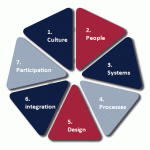Rolling Forecast can become the path leading to better company’s profitability and improved operating performance. This...
 We often hear organisations hail the move from traditional annual budgeting to rolling forecast as a great improvement. However what makes rolling forecast great? Is rolling forecast the answer to ease the pain of budgeting? This article explores what rolling forecast is, it’s pros and cons, some best practice times and if rolling forecast can ease the pain of budgeting.
We often hear organisations hail the move from traditional annual budgeting to rolling forecast as a great improvement. However what makes rolling forecast great? Is rolling forecast the answer to ease the pain of budgeting? This article explores what rolling forecast is, it’s pros and cons, some best practice times and if rolling forecast can ease the pain of budgeting.
First, what is rolling forecast about? Rolling forecast in its simplest form looks at a much shorter horizon when it comes to projecting income and allocation of resources. Rolling forward is not only extending the forecasting period by one period. It refocuses the business in the short term. It engages the business to review its performance more regularly. This enables decision makers to respond quicker and take corrective actions to bring the business back inline to the target. Rolling forecast differs from strategic long-range planning in that it focuses decision making on a more immediate impact of the changing environment.
So, the benefits of rolling forecast include:
- continuous review of the projection
- encourage agile response to the ever-changing environment
- to be more dynamic when it comes to taking opportunities and risk management
- promote driver-based mentality
- improve forecast accuracy.
Rolling forecasts may enable a more proactive response from the business. However there are some drawbacks worth noting. Forecast inefficiencies can be masked as the forecasting period is moved along. It can also be time-consuming if the forecast elements are too many. There is potential misconception that rolling forecast can generate a moving goalpost mentality with the organisation.
These drawbacks can hinder the effective implementation of rolling forecasts. Sponsors of rolling forecast implementation need to recognise them and devise appropriate solutions. It is important to educate stakeholders the purpose of rolling forecast. It is also important to focus on the main drivers. In most cases, 20% of the drivers account for 80% of the variances. Using key drivers in rolling forecast reduces complexity, eases the anxiety that this may be a long drawn out processes, and encourages refocus of what is important.
A static budget gives a yardstick for the business to aim for. It acts like a benchmark. A static budget is inherently out of date once it is produced because the environment will have changed. However it does not mean that we abandon static budget all together. A static budget is still useful for fixed costs elements of the financial statements. However we should consider what drivers will cause the fixed costs to change – headcount changes, site expansion, regulatory changes on fixed fees etc. A static budget can still help bring focus to the strategic goals. What we should aim for is move away from traditional static annual budgeting to beyond budgeting. Through beyond budgeting, managers are encouraged to re-examine how they manage the business and not just the task of budgeting or forecasting at hand.
Rolling forecast is not intended to fully remove budgeting. However it gives a good guide of what the budget should look like. This reduces the number of reiterations. To move towards beyond budgeting requires a mindset change. Rolling forecast can be one of the first step towards beyond budget.
Some final words on rolling forecast best practices
- Instill the appropriate culture - get management buy-in - do not underestimate the power beyond
- Do not aim for perfection - rolling forecast is not a crystal ball but aims at producing the best estimates
- Focus on key drivers – remember the Pareto rule
- Choose the appropriate forecast horizon - it’s a forecast and not a budget
- Be prepared – you can only create good projection if you’ve done your homework.
Disclaimer
Any views or opinions expressed are solely those of the author and do not necessarily represent those of The Warranty Group. The Warranty Group is part of Assurant.
The article was first published in Unit 4 Prevero Blog
Subscribe to
FP&A Trends Digest

We will regularly update you on the latest trends and developments in FP&A. Take the opportunity to have articles written by finance thought leaders delivered directly to your inbox; watch compelling webinars; connect with like-minded professionals; and become a part of our global community.



